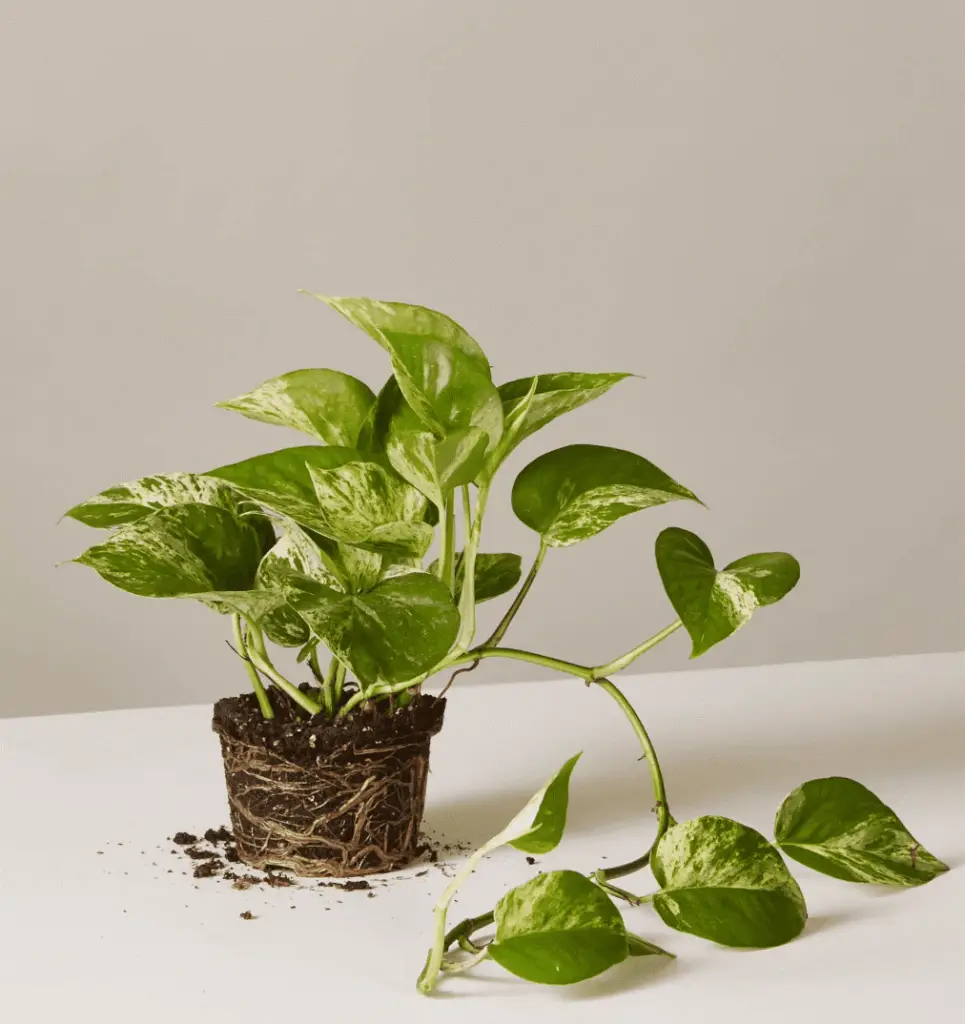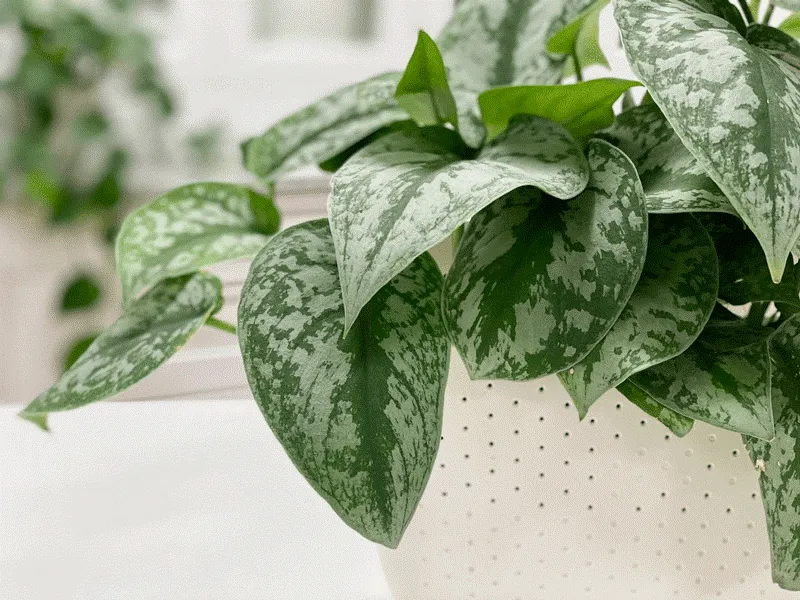The other name of Pothos is Devil’s ivy and is one of the quickly caring plants that can survive in every condition. These plants are some of the most attractive plants at your place for decoration purposes. Proper growth and care of the plants help in creating a flawless look for the plant. The ideal pothos leaves are sturdy, healthy, glossy, and almost heart-shaped leaves.
There are specific reasons, which lead to the curling of the pothos leaves. One of the primary reasons is underwatering of the plant. This guide will highlight the reasons why the pothos leaves curl.
You need to consider all these points if you love your pothos plant and maintain the houseplant. Also, you need to follow the points to prevent the pothos leaves from curling.
Key Reasons of the Pothos Leaves Curl
Several reasons that contribute to making the pothos leaves curl reason are:
- Temperature stress
- Disease or the insect infestation
- Root rot that occurs from overwatering
- Underwatering
- Imbalance in the light exposure
- Overfeeding the Pothos using fertilizer
All these conditions must be kept in mind to prevent the pothos leaves from curling. Keeping these situations in mind will help in fixing the issues that the plant faces
If you want to make your Pothos plants look fresh and glossy, continue reading the guide and get to know more about the causes and the solutions of the Pothos leaves to curl.
Check the Philodendron vs Pothos: Difference between Pothos and Philodendron

1. Temperature Stress:
Maintaining the plant’s temperature is highly essential, as it will help prevent the leaves from spiraling downward. Too much heat will make the leaves curl downwards.
The optimum temperature of the plant is between 65 – 85 degrees Fahrenheit. If the temperature goes beyond this limit, it can increase the chances of problems within the plant.
One of the best suggestions to prevent the plant from temperature stress is to keep them indoors. It will provide you with an opportunity to monitor and assess the changes in the plants.
Preventive Measures:
- You can position the plant at an ideal location.
- Avoid continuous, direct sunlight, as intense light can cause leaf burn and yellowing of the leaves.
- Avoid placing the plant in extensively cold or hot temperatures.

2. Disease or Insect Infestation:
Insect infestation is the primary reason for letting the plant in trouble and can also cause curling of the pothos leaves.
The bugs present in the plant suck the plant, driving the curling of the pothos leaves. You must keep an eye on the plant, and if you see any bug, you must remove that immediately.
Solution:
If you see any insects on the pothos leaves, you are supposed to wipe the plant with alcohol or any other spray.
Using alcohol will help in the deterioration of the insects.
Check the Complete Guide Rhaphidophora Tetrasperma: How to Care & Grow
3. Underwatering:
Pothos plants must be watered properly. Otherwise, it can have a long-term impact on the plant. An imbalance in the watering of the plant can cause the pothos leaves to curl.
If the pothos plants receive little or no water, then the plant leaves start winding to retain the moisture.
After curling, the pothos leaves are subjected to become limp and wilt as well. So, you need to analyze your plant from time to time and manage underwatering. It will help in recatching the problem earlier and will help the leave to recover earlier.
These plants love to dry the soil between watering, and hence you can examine the underwatering by analyzing the time that ground takes to dry.
4. Root Rot:
Root rot is a leading reason causing the poor drainage and curling of the pothos leaves. It can also result in waterlogged soil, and hence the plant cannot survive for a more extended period.
Staying the plants with root rot is impossible for the long term and can let the plant in trouble. It can also lead to stunt growth.
The root rot of the pothos plant reduces the plant’s ability to take water and nutrients to the soil. As a result, the plant leaves get dehydrated, and hence the leaves began to curl.
Solutions:
- Root rot of the plant in the early stages can make the plant safe, and you need to unpot the plan after investigating the roots.
- The color of the healthy root is white.
- After changing the pot, you need to wash your equipment and can then plant the Pothos again.
5. Overfeeding the Plant:
Overfeeding the pothos plant can also lead the leaves to curl, so you must feed these plants correctly. One of the significant tell-tale signs that lead to the overfeeding of the leaves is that pothos leaves are generally smaller than usual and have a different color. The plant also shows the curling of the plant downwards at the tips.
Most people overfeed these pothos plants by utilizing an extensive range of fertilizers. Using a significant degree of fertilizers can also cause the build-up of the salts and the nitrogen within the soil. If you are a caretaker of the plant, then you must fertilize the plant once or twice.
Some of the significant signs that occur due to the overfeeding of these plants are as follows:
- Yellowing of the pothos leaves.
- The roots of the plants begin to rot.
- The upper surface of the soil can get whitish or crusty.
- The leaves of the pothos plant will start dropping off.
Preventive Measure:
- One preventive measure that you can use to regain the strength of these pothos leaves is to remove the houseplant from the soil. Placing this plant in fresh soil will help in dealing with the issue.
- Implementation of this technology will help you get rid of the excess nutrients present in the soil.
- You can also flush the soil to drench the soil with water. Repetition of this procedure will help in getting rid of the extra fertilizer.
6. Light Exposure:
A healthy pothos has flat and broad leaves, which turn them to the source of the light. These plants grow best in the optimum range of sunlight, as direct sunlight can lead to the yellowing of the leaves. Dealing with direct exposure to the sunlight can cause curling of the pothos leaves.
Solution:
You can deal with the issue by placing the pot where it gets more natural light. If the plant is getting excess sunlight, you need to choose the place with less light exposure.

Conclusion:
On a concluding note, these are the significant reasons that impact the growth of the plant. All the above-defined reasons cause curling of the pothos leaves.
If you want to make your plant look beautiful, you need to consider all these factors. The preventive measures will help the plant to grow fully.
These plants are easy to care for and can quickly recover. Letting the plant grow in optimum conditions can help in the growth of Pothos.
Check the complete guide How Fast Does Aloe Vera Grow
Frequently Asked Questions about Pothos Leaves Curling
Why is my silver pothos leaves washed out?
The primary reason behind this is the underwatering of the plants. If the plant is not getting enough water, the leaves get to dry, causing the silver pothos to wash out.
How does the overwatered pothos plant look like?
The two keywords that fit the best to describe the pothos plant are then withered and the mushy appearance. If you touch the brown parts of the plant, then it will look mushy. In most circumstances, you might also experience a mildewy odor.
How often should I water the pothos plant?
For the ideal growth of the plant, you are supposed to water this plant after every one or two weeks. In summers, you are supposed to water plants more, while in the winters (or less light), you need to water them less.
What strategies help the pothos plant to grow fast?
a. Using balanced nutritional growing materials will help.
b. The plant must be provided with balanced light and indirect sunlight.
c. Water the plant in a balanced way.
d. Keep checking on the pests regularly.
e. Feed the plant with a balanced quantity of fertilizer.
f. The temperature must be between 70 to 90 degrees Fahrenheit.
